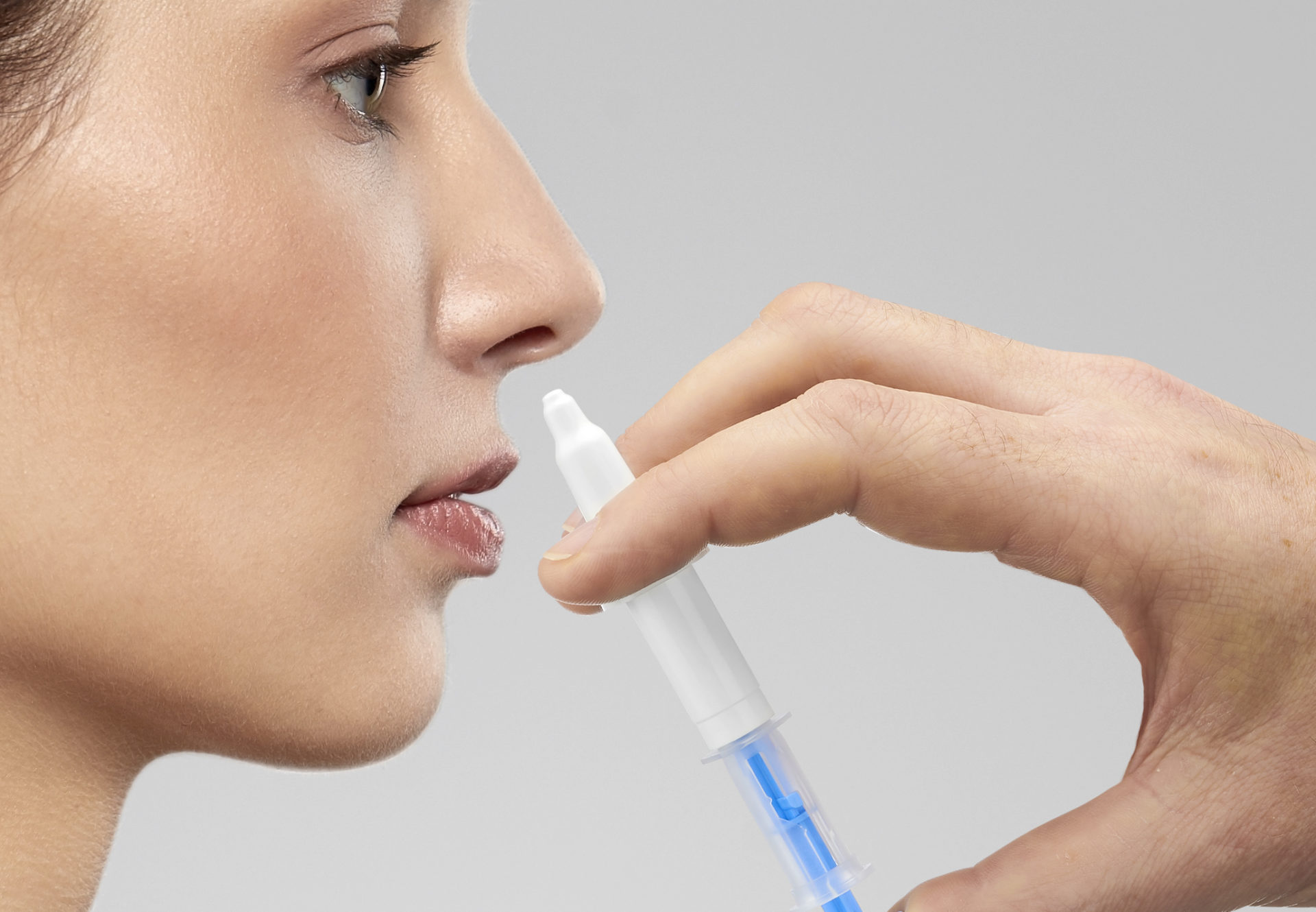Although global concerns surrounding COVID-19 have somewhat waned, the threat persists, particularly for those with compromised immune systems or individuals over 65 years old.
Vaccines have proven effective in preventing severe illness and fatalities. Yet, enhancing their capacity to halt SARS-CoV-2 transmission at the upper respiratory tract’s point of entry remains a priority.
A collaborative initiative led by the University of Michigan and the Icahn School of Medicine at Mount Sinai has yielded a nasal vaccine adjuvant that curbs infection in both young and aged mice.
An adjuvant is a supplement incorporated into certain vaccines to amplify immune responses, heightening efficacy. Many existing vaccines incorporate adjuvants, especially recommended for individuals aged 65 and above.
This novel vaccine approach, pioneered by Pamela Wong, Ph.D., and Michael Schotsaert, Ph.D., along with their teams, merges a nanoemulsion—visualize a minuscule blend of oil and water—with an RNA-based molecule akin to how the immune system detects viral intrusion. This combination serves as an intranasal adjuvant, galvanizing immune reactions in the upper respiratory system.
“Intranasal vaccines are gaining traction for respiratory viruses because they promote mucosal immunity, a shield against viral spread. Injectable vaccines struggle to induce mucosal immune responses,” states Wong, a research assistant professor in the U-M Medical School Department of Internal Medicine.
Schotsaert, an assistant professor of microbiology at Icahn Mount Sinai, and Wong both grasp the potential and complexities of an adjuvanted intranasal vaccine delivery system. Collaborating for nearly a decade, their endeavor aims to craft a system yielding robust immune responses.
Their protocol optimizes both components: the RNA adjuvant spurs antiviral pathways within cells, while the nanoemulsion ushers it into cells, preventing rapid clearance from nasal passages. Simultaneously, it activates immune pathways that complement the RNA adjuvant-triggered response.
Through trials with the SARS-CoV-2 receptor binding domain protein—a portal for the virus to enter host cells—the combined vaccine sparked elevated antibody and memory T cell reactions in both young and aged mice, including the mucosa of the upper airway where the virus proliferates.
“Intranasal vaccines containing only the protein or inactivated virus struggle to elicit potent responses. Mucosal sites encounter numerous stimuli, leading to ‘trained’ restraint. Adjuvants help surmount this barrier while ensuring safety,” Schotsaert explains.
Remarkably, the intranasal vaccine outperformed the intramuscular adjuvant Addavax in older mice—a similar adjuvant used in elderly flu vaccines—by generating viral neutralizing antibodies and T cell responses.
The journey toward an adjuvant for nasal administration has been challenging. In the United States, only one FDA-approved nasal vaccine exists—FluMist—which lacks an adjuvant and isn’t recommended for those over 49.
Switzerland licensed an adjuvanted nasal flu vaccine, later withdrawn in 2000 due to reports of Bell’s palsy. Other intranasal COVID-19 vaccines showed either transient protection or weak immune responses.
Conversely, the combined adjuvanted intranasal vaccine exhibits potent, enduring SARS-CoV-2 immunity in preclinical models. Additionally, the nanoemulsion possesses an intriguing feature: it can independently inactivate viruses.
“This implies combining live virus with the nanoemulsion could neutralize it without harsh chemicals, preserving viral protein conformation for the immune system. This could potentially yield superior immune responses,” Wong adds.
The team plans to further study the adjuvant, gearing toward Phase 1 safety trials, and explore its application for a universal flu vaccine—an endeavor spurred by the COVID-19 pandemic’s urgency.
Paper cited: “Multicomponent intranasal adjuvant for mucosal and durable systemic SARS-CoV-2 immunity in young and aged mice,” NPJ Vaccines. DOI: 10.1038/s41541-023-00691-1
